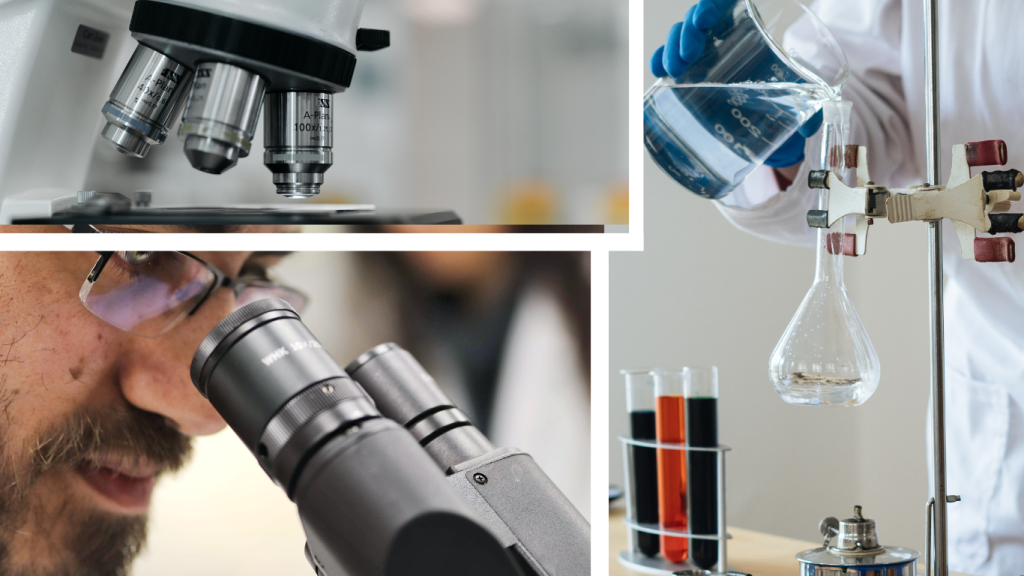Biology
Welcome to the captivating world of biology, where we explore the science of life! From the tiniest cells to the vast ecosystems, biology helps us understand how living organisms interact and thrive.
At EngDrive, we’re excited to introduce you to this essential field of study, guided by our highly experienced teacher, Boustani Mohammed. With a wealth of knowledge and a passion for teaching, he will lead you through the wonders of biology, ensuring a rich learning experience.
Special thanks to Boustani Mohammed for his dedication and expertise in making biology accessible and engaging for all learners. Join us on this journey to discover the incredible stories of life!

Summary of the overall chemical reactions of cellular respiration from a glucose molecule:
Cellular respiration is a multi-step process that releases energy stored in a glucose molecule (C₆H₁₂O₆) by producing ATP. Here’s a summary of the chemical reactions involved:
Glycolysis (in the cytoplasm):
- One glucose molecule (C₆H₁₂O₆) is split into two pyruvate molecules (C₃H₄O₃).
- This reaction generates 2 ATP molecules and 2 NADH molecules.
Pyruvate Oxidation (in the mitochondria):
- Each pyruvate molecule is converted into acetyl-CoA (C₂H₃O-CoA).
- One CO₂ is released per pyruvate, and one NADH molecule is produced.
Krebs Cycle (Citric Acid Cycle):
- Acetyl-CoA enters the cycle, producing per turn: 2 CO₂, 3 NADH, 1 FADH₂, and 1 GTP (or ATP).
- For one glucose molecule, the cycle occurs twice, yielding a total of 4 CO₂, 6 NADH, 2 FADH₂, and 2 ATP.
Electron Transport Chain (in the mitochondrial membrane):
- NADH and FADH₂ from earlier stages donate their electrons to the electron transport chain.
- This generates a proton (H⁺) gradient across the mitochondrial membrane, enabling ATP synthase to produce about 34 ATP.
- At the end, oxygen (O₂) accepts electrons and combines with protons to form water (H₂O).
Total Yield: For one glucose molecule, cellular respiration produces up to 38 ATP molecules (though this number can vary slightly), 6 CO₂ molecules, and 6 water molecules.
Here is a translation of the summary of the chemical reactions involved in the two types of fermentation: lactic fermentation and alcoholic fermentation.
1. Lactic Fermentation:
Lactic fermentation occurs in the absence of oxygen (anaerobic conditions) in cells, such as muscle cells in animals or in certain bacteria. It allows for the regeneration of NAD⁺ to continue glycolysis and produce a small amount of energy (ATP).
Chemical Reactions:
Glycolysis:
- One glucose molecule (C₆H₁₂O₆) is converted into 2 pyruvate molecules (C₃H₄O₃).
- Produces: 2 ATP and 2 NADH.
Reduction of Pyruvate to Lactate:
- The 2 pyruvate molecules are reduced by the 2 NADH molecules into 2 lactate molecules (C₃H₅O₃).
- Produces: 2 lactate molecules and regeneration of 2 NAD⁺.
Summary of Lactic Fermentation:
- 1 glucose → 2 lactates + 2 ATP (from glycolysis).
- This reaction allows cells to produce energy in the absence of oxygen, but it is less efficient than cellular respiration.
2. Alcoholic Fermentation:
Alcoholic fermentation occurs in yeast and certain bacteria. It is also an anaerobic pathway that produces alcohol (ethanol) and carbon dioxide (CO₂), while regenerating NAD⁺ to sustain glycolysis.
Chemical Reactions:
Glycolysis:
- One glucose molecule (C₆H₁₂O₆) is converted into 2 pyruvate molecules (C₃H₄O₃).
- Produces: 2 ATP and 2 NADH.
Decarboxylation of Pyruvate to Acetaldehyde:
- Each pyruvate molecule loses a CO₂ molecule to form 2 acetaldehyde molecules (C₂H₄O).
- Produces: 2 CO₂ molecules.
Reduction of Acetaldehyde to Ethanol:
- The 2 acetaldehyde molecules are reduced by the 2 NADH molecules to form 2 ethanol molecules (C₂H₆O).
- Produces: 2 ethanol molecules and regeneration of 2 NAD⁺.
Summary of Alcoholic Fermentation:
- 1 glucose → 2 ethanols + 2 CO₂ + 2 ATP (from glycolysis).
Overall Summary:
- Lactic fermentation converts glucose into lactate, regenerating NAD⁺ for glycolysis, and produces 2 ATP.
- Alcoholic fermentation produces ethanol and carbon dioxide from glucose while regenerating NAD⁺, with 2 ATP also produced.


Both processes enable energy production in the absence of oxygen but are far less efficient than aerobic respiration.

Meet Our Expert: A Master of Science and Education
With over 40 years of experience in teaching biology and geology, Boustani Mohammed is one of the most respected figures in the world of science education. His dedication extends beyond the classroom, as he also prepares future doctors for medical school, equipping them with the essential knowledge needed for success. Known for his exceptional competence and teaching performance, he has shaped countless students’ academic journeys.
Now, Boustani Mohammed brings his expertise to EngDrive, where he will guide learners through English for Specific Purposes (ESP), focusing on scientific terminology and providing clear, concise lesson summaries in English. As one of the best in his field, his contributions will offer unparalleled insight into science and language learning, making complex concepts accessible to all.




